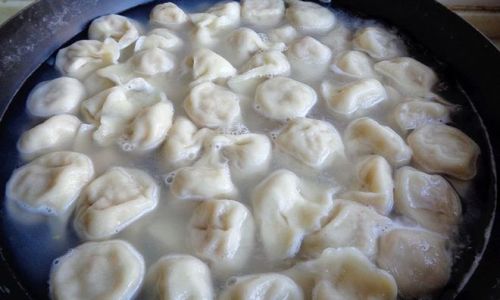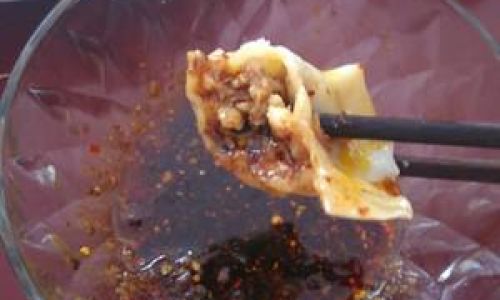Introduction
Cherries, with their vibrant red hue, juicy flesh, and sweet-tart flavor, are a delight enjoyed by many during their brief but cherished season. Whether you’re a cherry farmer, a market vendor, or a consumer eager to bring home the freshest batch, knowing how to select and pack fresh cherries is crucial to preserving their quality and extending their shelf life. This comprehensive guide will walk you through the process, from identifying the perfect cherries to packing them securely for transport or storage.
Understanding Cherry Varieties
Before diving into the selection process, it’s essential to understand the different types of cherries available. Broadly speaking, cherries are categorized into two main groups: sweet cherries and tart (or sour) cherries.
-
Sweet Cherries: These are the most popular variety for fresh consumption due to their sweet, juicy taste. Common sweet cherry varieties include Bing, Rainier, and Lambert. Bing cherries are dark red, firm, and have a rich flavor. Rainier cherries are a unique yellow with a red blush, offering a milder sweetness. Lambert cherries are known for their large size and firm texture.

-
Tart Cherries: As their name suggests, these cherries have a more tart, acidic flavor profile, making them ideal for cooking, baking, and making preserves. Montmorency is the most common tart cherry variety.
Selecting Fresh Cherries
Selecting fresh cherries involves a combination of visual inspection, tactile assessment, and understanding the best harvesting practices. Here’s a step-by-step guide:
-
Color Inspection:
- For sweet cherries, look for an even, deep red color with a glossy shine. Some varieties like Rainier may have a yellow background with a red blush.
- Tart cherries are typically a darker red or almost purple, with a matte finish.
- Avoid cherries with patches of brown, green, or mold as these indicate immaturity, over-ripeness, or spoilage.
-
Firmness and Texture:
- Fresh cherries should feel firm to the touch. Gently press the fruit; it should give slightly but spring back quickly.
- Avoid cherries that are soft, mushy, or have wrinkles. These signs indicate that the cherries are overripe or have been handled roughly.
-
Stem and Stem Attachment:
- Freshly picked cherries often retain their green stems. The stem should be securely attached to the fruit without any signs of breaking or drying.
- If the stem is missing or easily pulls off, it could mean the cherry was harvested too early or handled too roughly.
-
Smell and Taste:

- Fresh cherries have a distinct, sweet aroma. If the cherries lack fragrance or have an off-putting smell, they may not be fresh.
- If possible, taste a cherry before buying. It should be juicy and have a balanced sweetness (for sweet cherries) or tartness (for tart cherries).
-
Harvest Timing:
- Cherries are a seasonal fruit, typically harvested in late spring to early summer. The exact timing depends on the region and variety.
- Early-season cherries might be slightly less sweet due to cooler temperatures, while late-season cherries can be sweeter but may also be softer.
-
Source Reliability:
- Buy cherries from reputable farmers, markets, or grocery stores. Ask about their harvesting and storage practices.
- Local, farm-fresh cherries are often the freshest option as they haven’t undergone long transportation times.
Preparing Cherries for Packing
Once you’ve selected the freshest cherries, it’s time to prepare them for packing. Proper preparation ensures minimal damage during transit and extends shelf life.
-
Sorting and Grading:
- Sort cherries by size and quality. Remove any cherries with blemishes, soft spots, or mold.
- Grade cherries based on their firmness, color, and overall appearance. This helps in consistent packing and pricing.
-
Cooling:
- Immediately refrigerate cherries after harvesting or purchasing to slow down ripening and prevent spoilage.
- Aim for a temperature of around 32-36°F (0-2°C). This helps maintain firmness and freshness.
-
Inspecting for Insects and Debris:

- Carefully inspect each cherry for insects, particularly fruit flies, which can lay eggs in the fruit.
- Remove any leaves, twigs, or dirt that may have adhered to the cherries during harvesting.
-
Drying:
Gently pat the cherries dry with a clean, soft cloth or paper towel. Excess moisture can promote mold growth.
Packing Fresh Cherries
Proper packing is vital for protecting cherries from bruising, maintaining freshness, and ensuring they arrive in optimal condition. Here are some best practices:
-
Choosing the Right Packaging:
- Use rigid containers with secure lids to prevent movement and crushing. Clamshell containers or ventilated plastic boxes are ideal.
- Avoid using bags or containers with soft sides as they offer little protection.
-
Lining the Container:
- Line the bottom of the container with a moisture-absorbent pad or paper towels to absorb any excess moisture.
- Consider using a food-safe silicone or foam insert to create compartments or layers, minimizing cherry-to-cherry contact.
-
Single-Layer Packing:

- Pack cherries in a single layer if possible. This minimizes stacking pressure and reduces the risk of bruising.
- If multiple layers are necessary, place a moisture-absorbent pad between each layer.
-
Ventilation:
- Ensure the container has adequate ventilation to allow for air circulation, which helps maintain freshness and reduce mold growth.
- Ventilated plastic boxes with perforations are excellent choices.
-
Labeling:
- Clearly label the container with the date of packing, variety of cherries, and any special handling instructions.
- Include a “Keep Refrigerated” label to remind consumers or recipients to store the cherries properly.
-
Handling with Care:
- When packing, handle cherries gently to avoid punctures or bruises.
- Stack containers securely but avoid overloading to prevent crushing.
Storage and Transportation Tips
Maintaining the cold chain is crucial for preserving cherry freshness during storage and transportation.
-
Refrigerated Storage:
- Store packed cherries in a refrigerator at a consistent temperature of 32-36°F (0-2°C).
- Avoid temperature fluctuations, which can accelerate spoilage.
-
Humidity Control:

- Maintain a relative humidity of around 90-95% to prevent dehydration and maintain firmness.
- Use humidity-controlled packaging or wrap cherries loosely in plastic wrap to retain moisture without promoting mold.
-
Transportation:
- Use refrigerated trucks or containers for transporting cherries over long distances.
- Monitor temperature and humidity levels during transit to ensure optimal conditions.
- Avoid exposing cherries to direct sunlight or extreme temperatures.
-
Shelf Life:
- Fresh cherries can last up to two weeks in the refrigerator if properly stored.
- Consume or use cherries as soon as possible after purchasing to enjoy peak freshness.
Conclusion
Selecting and packing fresh cherries requires attention to detail and a commitment to preserving their natural quality. By following the guidelines outlined in this guide, from understanding cherry varieties to proper packing and storage, you can ensure that your cherries arrive fresh, juicy, and ready to delight their recipients. Whether you’re a farmer, vendor, or consumer, these practices will help you maximize the enjoyment and shelf life of this seasonal delight. Happy cherry picking and packing!






0 comments